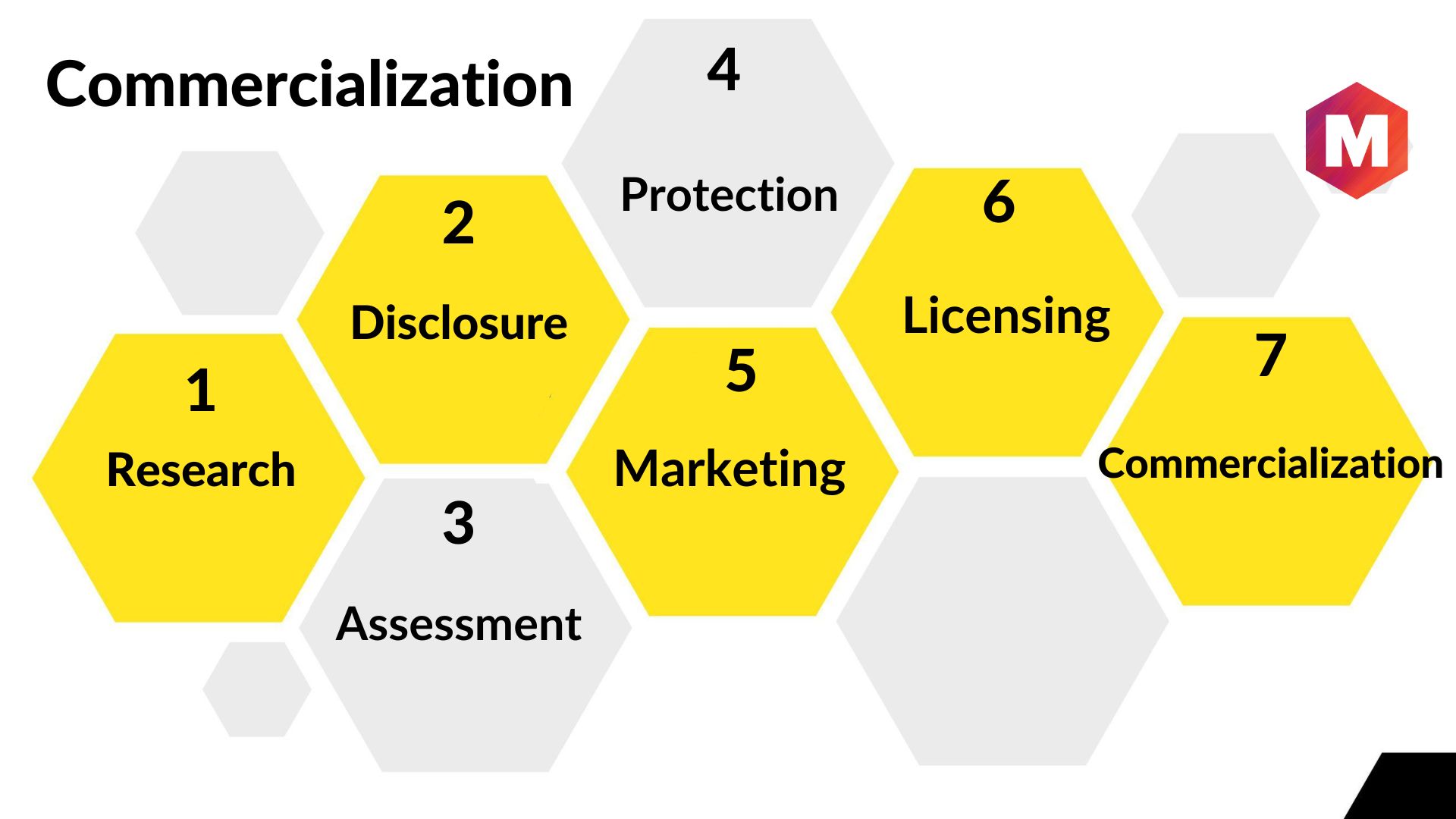Fashion, once fashionable but now marked by lively conversations and profound critiques, appears to echo with a different tone. Have you ever wondered what happened to the eloquent discussions that used to surround high fashion, shaping trends and sparking intellectual debates? The corridors of fashion dialogue seem to have undergone a transformation, leaving enthusiasts questioning the evolution of the language that once defined an industry.
Fashion discourse appears to have lost its hold on high fashion as a result of the shifting dynamics of the industry. As a result of the rise of social media, corporate interests, and influencers, the conversation has shifted away from the personal to a more commercial and clickbait-driven environment. Because of this shift, fashion has evolved not only into a vocabulary but also into a concept of thoughtful critique, which was once the hallmarks of high fashion discussions.
High fashion talk, as we look at the demise of this once-vivid institution, provides a thorough examination of the factors that contributed to its demise. This course will provide you with an in-depth look at language evolution, the impact of social media on discourse, and the quest for meaningful discourse in an age dominated by instant gratification. In this article, we’ll look at how we can revive the substance in high fashion talk and lay the groundwork for a more thoughtful and enriching dialogue within the fashion world.
The Glory Days of High Fashion Talk
In delving into the historical tapestry of high fashion discussions, one must unfurl the chapters that compose the glory days of this captivating narrative. At its inception, the discourse surrounding high fashion was not merely a dialogue but a cultural phenomenon, intricately woven into the fabric of society. The historical context of these conversations serves as a testament to the evolution of an industry that transcended mere garments, morphing into a mirror reflecting societal values and aspirations.
In the annals of high fashion, influential figures and platforms emerged as maestros orchestrating the symphony of discourse. Design luminaries, editorial visionaries, and iconic fashion houses etched their indelible mark on the narrative, shaping it with each stitch and penned word. From the visionary designs of Coco Chanel to the cutting-edge editorials of Diana Vreeland, these luminaries were not mere architects of fashion but sculptors of dialogue. The platforms they commanded, be it glossy magazines or revered runways, served as the stage for a riveting performance that captivated not just the fashion aficionados but the collective imagination of a global audience.
The impact of these conversations was not confined to the realms of style; it reverberated through the corridors of fashion trends and consumer behavior. High fashion talk, in its golden era, possessed a transformative power, dictating trends that rippled through the industry and transcended into mainstream culture. The symbiotic relationship between fashion dialogue and consumer behavior was palpable, with the former influencing the latter in a dance of mutual inspiration. Consumers, once passive observers, became active participants in the narrative, shaping trends through their embrace of fashion discourse.
Amidst the pages of history, one can discern the palpable influence high fashion talk wielded over the collective psyche. It wasn’t merely a dialogue but a cultural force, shaping perceptions, fostering creativity, and setting the tone for sartorial expression. The historical context, influential figures, and platforms are not mere chapters; they are the keystones that built the edifice of high fashion discourse. As we traverse the corridors of time, these elements stand as a testament to the grandeur of an era where fashion talk was not just a conversation but a symphony, resonating through the years and echoing the glory days of high fashion discourse.
Shifts in Consumer Behavior
In the ever-evolving landscape of high fashion, the tectonic shifts in consumer behavior have become a seismic force reshaping the very foundations of fashion discourse. The rise of social media, akin to a cultural supernova, has propelled itself as the dominant communication platform, revolutionizing how fashion conversations unfold in the digital era.
The Social Media Epoch:
- Dominance of Platforms: The advent of social media platforms, including Instagram, Twitter, and TikTok, has catapulted fashion dialogue into the digital spotlight, giving individuals a virtual front-row seat to the ever-changing landscape of trends and styles.
- Real-Time Engagement: Social media facilitates instantaneous interaction, enabling fashion enthusiasts to engage in dynamic conversations, share insights, and contribute to the ongoing narrative in real time.
Visual-Centric Paradigm:
The effects of this digital transformation are profound, particularly in the realm of visual-centric content. In an age dominated by scrolling and swiping, the discourse surrounding high fashion has undergone a metamorphosis, shifting from verbose critiques to a visual language that speaks volumes.
- Impact on Critique: Visual-centric content, often characterized by images, videos, and graphics, has truncated the space for elaborate written critiques. The succinct nature of visual elements has redefined the parameters of fashion discourse, prioritizing brevity and immediacy.
- Influence on Trends: The immediacy of visual content allows trends to proliferate rapidly, setting the stage for a faster, more dynamic fashion cycle. Styles that once percolated through magazines and runways now disseminate at the speed of a double-tap.
Accessibility and Inclusivity:
As the digital curtain rises on fashion conversations, accessibility and inclusivity take center stage. The once-exclusive realm of high fashion talk is now open to a broader audience, fostering a more democratic and diverse dialogue.
- Democratization of Fashion: Social media platforms have dismantled traditional barriers, democratizing fashion by providing a platform for emerging voices and perspectives. Fashion conversations are no longer confined to the elite but echo through the digital corridors, resonating with a global audience.
- Inclusive Narratives: The inclusivity embedded in digital fashion discourse extends beyond geographical boundaries. Communities that were once marginalized find a voice, and previously overlooked styles garner recognition, challenging traditional notions of beauty and fashion.
As we navigate the ever-shifting currents of consumer behavior, it becomes evident that the rise of social media, the prevalence of visual-centric content, and the push for accessibility and inclusivity have irrevocably altered the trajectory of high fashion discourse. The digital stage is set, and the spotlight now extends beyond the runways, inviting a diverse ensemble of voices to shape the narrative, democratizing fashion discourse in unprecedented ways.
Commercialization and Branding

In the intricate dance between fashion discourse and corporate interests, the symbiotic relationship between commercialization and branding has cast a profound shadow over the once-pure landscape of high fashion dialogue. As we unravel the layers of this complex narrative, it becomes apparent that the influence of corporate interests on fashion dialogue is not merely a subplot but a defining force shaping the contours of the industry.
Corporate Influence on Fashion Dialogue:
- Monetary Motivations: The pervasive influence of corporate interests often introduces a monetary undercurrent into the once-organic stream of fashion conversation. As brands seek to align their narratives with profit margins, the authenticity of discussions becomes entangled in the pursuit of financial gains.
- Brand Narratives: The rise of corporate-backed narratives shifts the focus from the organic evolution of fashion trends to strategically curated brand stories. The dialogue, once driven by the intrinsic creativity of designers, now bears the imprint of calculated messaging crafted to resonate with target demographics.
Sponsored Content and Its Ramifications:
The influx of sponsored content further complicates the authenticity of fashion discussions, creating a dichotomy between genuine dialogue and commercially driven narratives.
- Authenticity Challenges: Sponsored content, while injecting capital into the industry, introduces challenges to the authenticity of discussions. As influencers and platforms become financially intertwined with brands, the once-unbiased perspectives are inevitably colored by corporate affiliations.
- Blurry Lines: The lines between editorial integrity and promotional content become increasingly blurred, challenging the discerning eye of the audience. The impact on authenticity permeates every layer of fashion discourse, from runway reviews to product endorsements.
Creativity Yielding to Marketability:
The gravitational pull towards marketability has led to a palpable shift in the core values of fashion discourse. The once-cherished focus on creativity and artistic expression has gradually succumbed to the demands of the market.
- Market-Driven Priorities: The pivot towards marketability underscores a fundamental change in priorities, with discussions revolving around what sells rather than pushing the boundaries of creative exploration. The consequence is a diluted narrative that caters more to consumer demands than artistic innovation.
- Homogenization of Trends: The pursuit of market success often leads to the homogenization of trends, where uniqueness takes a back seat to mass appeal. As discussions lean towards safer, commercially viable choices, the avant-garde spirit that once defined high fashion finds itself navigating the periphery.
In this intricate tapestry of commercialization and branding, the impact on fashion dialogue is undeniable. The delicate balance between corporate interests, authenticity, and creativity is a tightrope walk that defines the direction of industry conversations. As we navigate this terrain, the challenge lies in preserving the essence of high fashion discourse while acknowledging the realities of a landscape increasingly shaped by corporate imperatives. The dialogue must evolve with a conscious effort to reclaim authenticity, ensuring that the soul of fashion discourse remains resilient in the face of commercial pressures.
Erosion of Intellectual Discourse

In the contemporary landscape of fashion media, the erosion of intellectual discourse stands as a palpable testament to the transformative influence of the digital age. The proliferation of clickbait culture has emerged as a dominant force, reshaping the way fashion narratives unfold and challenging the depth of intellectual engagement within the industry.
Clickbait Culture’s Penetration:
- Sensational Headlines: The rise of clickbait culture is epitomized by the prevalence of sensational headlines that prioritize intrigue over substance. These headlines, strategically crafted to elicit immediate curiosity, often oversimplify complex fashion topics, undermining the nuanced discussions that once defined intellectual discourse.
- Emphasis on Quantity: Click-driven metrics have shifted the emphasis from quality to quantity, fostering an environment where speed and sensationalism take precedence over in-depth exploration. This culture perpetuates a race to publish attention-grabbing content at the expense of thoughtful analysis.
Sensationalism Over Critical Analysis:
The reduction of critical analysis in favor of sensationalism marks a paradigm shift in the priorities of fashion media, impacting the nature of discussions and the perceptions of the audience.
- Emotional Appeal: Sensationalism tends to prioritize emotional appeal, leveraging shock value to capture fleeting attention. This approach sidelines the analytical depth that once characterized fashion critique, catering to the desire for instant, emotionally charged content.
- Surface-Level Narratives: The reduction of critical analysis results in surface-level narratives that skim the contours of fashion topics without delving into the underlying complexities. Intellectual discourse is replaced by bite-sized, easily digestible content that lacks the substance necessary for a profound understanding of the subject matter.
Diminished Role of In-Depth Fashion Critique:
In the digital era, the once-revered in-depth fashion critique has seen a diminished role, overshadowed by the demand for bite-sized, entertainment-driven content.
- Visual Dominance: The ascendancy of visual content in fashion media further marginalizes written critique, pushing it to the periphery. Emphasis on visuals, while captivating, often sidelines the written word, reducing the space for nuanced analysis.
- Instant Gratification: The contemporary audience’s appetite for instant gratification reinforces the shift away from in-depth critique. Quick, visually appealing content gains precedence, leaving little room for the meticulous examination of design choices, cultural influences, or historical references.
As we navigate this era of digital upheaval, the erosion of intellectual discourse in fashion media poses a critical challenge. The industry must grapple with the implications of clickbait culture, the allure of sensationalism, and the diminished role of in-depth critique. The path forward necessitates a recalibration—a commitment to reinstating intellectual depth, fostering substantive discussions, and reclaiming the narrative from the clutches of superficial click-driven content. The future of fashion discourse hinges on striking a delicate balance, where intrigue and depth coexist, ensuring that intellectual engagement remains at the forefront of media narratives.
Social Media Dynamics
In the kaleidoscope of the digital age, social media dynamics have emerged as a transformative force, intricately interwoven with the fabric of fashion discourse. The role of influencers in shaping fashion conversations has become a pivotal element, steering the narrative in new directions, while simultaneously presenting challenges that echo across the online landscape.
The Influencer Quotient:
The proliferation of influencers has redefined the traditional power structures within the fashion industry, ushering in a new era where individuals hold sway over trends and consumer perceptions.
- Digital Trendsetters: Influencers, with their expansive reach on platforms like Instagram, TikTok, and YouTube, have become the torchbearers of fashion trends. Their ability to seamlessly blend personal style with promotional content has positioned them as key players in shaping consumer preferences.
- Brand Partnerships: The influencer landscape is characterized by symbiotic relationships with fashion brands, amplifying their reach and impact. Sponsored collaborations not only drive consumer engagement but also introduce a level of authenticity, as influencers curate content that resonates with their followers.
Echo Chambers and Online Discourse:
However, the meteoric rise of influencers also gives rise to challenges, particularly in the form of echo chambers that can inadvertently stifle diverse perspectives within the fashion dialogue.
- Homogeneity of Opinions: The cohesive nature of influencer communities can foster a homogeneity of opinions, where dissenting voices may find it challenging to penetrate the curated content. This echo chamber effect poses a risk to the richness of fashion discussions, potentially limiting exposure to a narrow spectrum of ideas.
- Filter Bubbles: Social media algorithms contribute to the formation of filter bubbles, where users are exposed to content aligning with their existing beliefs and preferences. In the context of fashion, this can lead to a narrowing of tastes, inhibiting the exploration of diverse styles and trends.
Instant Gratification’s Impact on Thoughtful Discussions:
The immediacy facilitated by social media platforms has ushered in an era of instant gratification, transforming the nature of fashion discourse and impacting the depth of thoughtful discussions.
- Brevity Over Depth: The format of social media encourages brevity, prompting succinct expressions rather than in-depth analysis. Fashion discussions, confined to bite-sized captions and visual snippets, often prioritize brevity over the nuanced exploration of design, cultural influences, or historical contexts.
- Attention Span Challenges: The rapid-scrolling nature of social media contributes to shorter attention spans, affecting the consumption of content. In the pursuit of immediate engagement, fashion conversations may lean towards easily digestible, visually appealing elements, potentially sidelining more complex, thought-provoking analyses.
As we navigate the intricacies of social media dynamics in the realm of fashion, the role of influencers, the challenges posed by echo chambers, and the impact of instant gratification on thoughtful discussions emerge as critical facets of the digital landscape. The evolving nature of these dynamics requires a nuanced approach, balancing the influence of key voices with a conscious effort to foster diversity of thought and encourage in-depth exploration within the expansive realms of fashion discourse.
Changing Language of Fashion
In the nuanced landscape of high fashion, the changing language of the industry stands as a mirror reflecting the evolving currents of culture, society, and communication. The evolution of fashion vocabulary and terminology serves as a linguistic chronicle, tracing the trajectory of an industry that, much like the garments it produces, undergoes continual transformation.
Evolution of Fashion Vocabulary:
The lexicon of high fashion has experienced a metamorphosis, propelled by cultural shifts, technological advancements, and the democratization of the industry.
- Inclusivity in Terminology: The contemporary fashion vocabulary has embraced inclusivity, moving beyond traditional norms to encompass a diverse range of styles, identities, and expressions. Inclusive terms that cater to a broader audience contribute to a more democratic and accessible fashion discourse.
- Tech-Driven Terminology: Technological advancements have introduced a new lexicon, with terms like “wearable tech” and “smart fabrics” seamlessly integrating into fashion discussions. This intersection of fashion and technology not only shapes the industry’s future but also introduces novel language to describe innovative concepts.
Simplification vs. Sophistication:
The pendulum swings between the simplicity of language for mass accessibility and the sophisticated terminology that upholds the artistry and craftsmanship intrinsic to high fashion.
- Accessible Language: The democratization of fashion has led to a simplification of language, making high fashion more accessible to a wider audience. Terms are demystified, and jargon is unpacked, allowing individuals with varying degrees of fashion literacy to engage in meaningful discussions.
- Artistry Preserved: Simultaneously, the industry retains a commitment to sophistication in its language. Technical terms, intricate details, and the nuances of craftsmanship are conveyed through a sophisticated lexicon, preserving the artistry and elevating the discourse among professionals and aficionados.
Impact of Linguistic Shifts:
As the language of fashion undergoes transformation, the impact reverberates beyond mere semantics, shaping the perception of high fashion in the eyes of the public.
- Democratization of Perception: Inclusivity in language contributes to the democratization of fashion perception. A more approachable lexicon fosters a sense of belonging, inviting diverse voices to participate in the ongoing narrative, challenging traditional notions of exclusivity.
- Influence on Brand Image: The language a brand employs shapes its image. Brands that master the delicate balance between accessible language and sophisticated terminology project an image of both inclusivity and expertise. This linguistic dexterity resonates with a consumer base that seeks authenticity coupled with a profound understanding of the craft.
In the kaleidoscope of linguistic shifts within high fashion, the industry grapples with the tension between inclusivity and sophistication, accessibility and artistry. The evolving vocabulary reflects not only the changing nature of fashion discussions but also the industry’s responsiveness to a dynamic global audience. As the language continues to shape and be shaped by the ever-evolving landscape of high fashion, it becomes a testament to the industry’s adaptability, resilience, and commitment to engaging a diverse and discerning audience.
Rediscovering Substance in High Fashion Talk

In the ever-evolving realm of high fashion, the quest to rediscover substance in fashion discourse emerges as a vital endeavor, requiring a strategic and thoughtful approach. The pursuit of meaningful fashion conversations is not just an aesthetic aspiration but a necessary recalibration in an era often dominated by surface-level discussions. Here are key strategies to revive and reinforce substantive dialogue within the high fashion community:
Strategies to Revive Meaningful Fashion Discourse:
Embrace Educational Initiatives:
- Establishing educational programs within the fashion community to enhance literacy in design elements, materials, and historical contexts.
- Collaborating with educational institutions and industry experts to host workshops and webinars, fostering a deeper understanding of the craft.
Curate Thoughtful Content Platforms:
- Launching curated online platforms that prioritize in-depth articles, interviews, and analyses over clickbait content.
- Encouraging long-form writing that explores the intricacies of fashion trends, design philosophies, and the cultural influences shaping the industry.
Leverage Influencer Partnerships for Substance:
- Collaborating with influencers who prioritize substance over sensationalism, promoting thoughtful discussions on their platforms.
- Encouraging influencers to delve into the historical, cultural, and artistic aspects of fashion, elevating the quality of content shared with their followers.
Fostering Intellectual Engagement Within the Fashion Community:
Establishing Virtual Think Tanks:
- Creating virtual forums or think tanks where designers, critics, and industry professionals can engage in intellectual discussions.
- Facilitating open dialogues on emerging trends, ethical practices, and the future of high fashion, encouraging diverse perspectives.
Encouraging Peer Review Mechanisms:
- Introducing peer review mechanisms within the fashion community to assess the depth and substance of written and visual content.
- Recognizing and promoting contributions that add value to the intellectual discourse, creating an environment that rewards substance.
Hosting Intellectual Events:
- Organizing conferences, symposiums, and events that bring together fashion luminaries, scholars, and enthusiasts.
- Focusing on themes that transcend fleeting trends, such as sustainability, cultural inclusivity, and the intersection of technology and fashion.
Balancing Creativity, Commerciality, and Critical Thinking:
Integrating Ethics into Design Practices:
- Encouraging designers to embed ethical considerations into their creative processes, fostering responsible and sustainable fashion.
- Spotlighting brands that strike a harmonious balance between creative innovation, commercial viability, and ethical practices.
Promoting Cross-Industry Collaboration:
- Facilitating collaborations between fashion and other industries, such as art, technology, and environmental science.
- Exploring interdisciplinary approaches that infuse high fashion with diverse perspectives, pushing boundaries and challenging conventional norms.
Elevating Critique to an Art Form:
- Positioning fashion critique as an art form in itself, acknowledging the nuanced skill required to analyze and appreciate the complexities of design.
- Encouraging critics to constructively challenge prevailing narratives, fostering a culture where critical thinking is celebrated rather than perceived as adversarial.
In the journey to rediscover substance in high fashion talk, the industry must collectively commit to cultivating an environment where intellect, creativity, and commercial acumen coexist harmoniously. By embracing education, fostering intellectual engagement, and striking a delicate balance between creative expression and critical thinking, the high fashion community can transcend superficial dialogues, ensuring that the discourse surrounding this art form reflects its depth and cultural significance.
Future Prospects
In peering into the future prospects of high fashion talk, a landscape of dynamic possibilities unfolds, offering glimpses into the resurgence of substantive discourse within the realm of couture and style. As the fashion industry continues to evolve, propelled by technological advancements and shifting cultural paradigms, exploration of innovative strategies, emerging platforms, and the pivotal role of consumers becomes paramount in shaping the trajectory of fashion dialogue.
Exploring Possibilities for the Resurgence of High Fashion Talk:
Utilizing Augmented Reality (AR) and Virtual Reality (VR):
- Harnessing AR and VR technologies to create immersive experiences that allow consumers to virtually engage with fashion shows, fostering a deeper understanding of design nuances.
- Augmenting the accessibility of high fashion, transcending geographical constraints and democratizing the experience.
Integration of Artificial Intelligence (AI):
- Leveraging AI algorithms to analyze and predict fashion trends based on consumer behavior, offering valuable insights to designers and enthusiasts.
- Personalizing fashion recommendations, enhancing user engagement, and providing a tailored approach to high fashion discussions.
Emerging Platforms and Movements Promoting Substantive Discussions:
Podcasting Renaissance in Fashion:
- The rise of fashion-centric podcasts that delve into in-depth discussions, featuring interviews with industry experts, designers, and thought leaders.
- Podcasts serving as a platform for nuanced conversations, exploring the intersection of fashion with culture, sustainability, and technology.
Interactive Digital Publications:
- Interactive digital magazines and publications incorporating multimedia elements, fostering a multi-sensory exploration of fashion.
- Dynamic content delivery that goes beyond static visuals, providing audiences with a richer and more engaging understanding of high fashion.
The Role of Consumers in Shaping the Future of Fashion Dialogue:
Demand for Sustainable Fashion Narratives:
- Consumers advocating for sustainability in fashion, influencing dialogues that prioritize ethical practices, eco-friendly materials, and transparent supply chains.
- The discourse shifting towards conscious consumerism, with an emphasis on the environmental and social impact of fashion choices.
Interactive Social Media Campaigns:
- Brands leveraging social media not just as a promotional tool but as an interactive space for meaningful conversations with consumers.
- User-generated content and discussions on social platforms contributing to the co-creation of fashion narratives, blurring the lines between creators and consumers.
Influence of User Reviews and Ratings:
- The increasing significance of user-generated reviews and ratings shaping the perception of fashion brands.
- Consumers playing a pivotal role in critiquing and celebrating brands, influencing the broader discourse on design, quality, and overall brand ethos.
As the future of high fashion talk unfolds, the convergence of cutting-edge technologies, innovative platforms, and the empowered voice of consumers promises a renaissance in substantive discourse. From the immersive realms of AR and VR to the intimate conversations facilitated by podcasts and interactive digital publications, the future holds the promise of a more inclusive, dynamic, and intellectually engaging fashion dialogue. The narrative of high fashion is no longer confined to the runway; it is a collaborative, ever-evolving tapestry woven by designers, enthusiasts, and a global community passionate about the artistry and cultural impact of fashion.
More related questions
- How has social media influenced high fashion conversations?
Social media has profoundly shaped high fashion conversations by democratizing access to trends and fostering immediate, global discourse. Platforms like Instagram, Twitter, and TikTok have turned consumers into contributors, enabling real-time engagement with runway shows, designer insights, and style influencers. This immediacy accelerates trend cycles, challenging traditional fashion calendars. Social media’s visual-centric nature also prioritizes aesthetics, influencing design trends and pushing brands towards visually striking content. Additionally, the rise of influencers as tastemakers amplifies diverse voices and challenges conventional beauty standards. However, this accessibility comes with challenges, including the prevalence of fast fashion and the potential oversaturation of trends. In essence, social media reshapes how fashion is perceived, consumed, and discussed, marking a paradigm shift in the industry’s dynamics.
- What role do influencers play in shaping the language of fashion?
In the realm of fashion, influencers wield significant influence in shaping the language of style and trends. Serving as cultural curators and trendsetters, influencers bridge the gap between designers and consumers, introducing and popularizing new terminologies, aesthetics, and fashion narratives. Their authentic engagement on social media platforms establishes them as authoritative voices, impacting the adoption of specific phrases, design philosophies, and even advocating for inclusivity in fashion language. By showcasing diverse styles and championing emerging designers, influencers contribute to the evolution of fashion lexicon, making it more accessible, dynamic, and reflective of the diverse voices within the fashion community. In essence, influencers act as linguistic catalysts, propelling the language of fashion into the mainstream and redefining industry discourse.
- Are corporate interests overshadowing genuine fashion critique?
The infiltration of corporate interests in the fashion industry has indeed cast a shadow over genuine fashion critique. As brands increasingly prioritize marketability over creativity, critiques may be influenced or subdued to maintain lucrative partnerships. Sponsored content, prevalent in the industry, tends to emphasize positive narratives, potentially stifling honest assessments. Moreover, the commodification of fashion has shifted focus from nuanced critique to profitability, impacting the authenticity of discussions. While genuine critics persist, the dominance of corporate agendas can limit the scope and depth of unbiased fashion analysis. Striking a balance between commercial interests and fostering candid critique remains a challenge, urging a recalibration to ensure the preservation of the industry’s artistic and critical essence.
- Can meaningful fashion discourse coexist with commercialization?
The coexistence of meaningful fashion discourse with commercialization poses a delicate balance within the industry. While commercial interests drive innovation, fund creativity, and expand accessibility, there’s a risk of diluting substantive discussions. The challenge lies in maintaining a symbiotic relationship where profitability supports artistic endeavors without compromising critical analysis. Brands engaging in purpose-driven narratives, sustainability, and ethical practices demonstrate that commercial success and meaningful discourse aren’t mutually exclusive. By aligning profit motives with broader societal and cultural dialogues, fashion can transcend mere consumerism, fostering an environment where the economic and intellectual facets harmonize. Successful coexistence hinges on the industry’s ability to integrate commerce into a narrative that values creativity, authenticity, and responsible practices, elevating fashion discourse beyond transactional conversations.
- How has the language of fashion evolved in the digital age?
The language of fashion has undergone a profound transformation in the digital age, marked by a shift in accessibility, inclusivity, and immediacy. Social media platforms serve as dynamic spaces where fashion terminology evolves rapidly, driven by influencers, designers, and diverse voices. The immediacy of digital communication has accelerated trend cycles, introducing and popularizing new phrases and expressions at an unprecedented pace. The democratization of fashion discourse through online forums and blogs has broadened the vocabulary, incorporating diverse perspectives and dismantling traditional elitist language. Moreover, visual-centric content on platforms like Instagram has elevated the importance of aesthetics, influencing the lexicon to encompass not only written descriptions but also visual expressions. In essence, the digital age has democratized and diversified the language of fashion, turning it into a more inclusive, dynamic, and accessible form of expression.
- What steps can be taken to revive intellectual engagement in the fashion community?
Reviving intellectual engagement in the fashion community necessitates intentional efforts. First, fostering educational initiatives within fashion institutions and online platforms can stimulate critical thinking. Establishing forums for open dialogue, both digital and physical, enables practitioners to share insights and challenge perspectives. Encouraging publications that prioritize in-depth analysis over superficial trends can elevate the intellectual discourse. Embracing diversity in voices, backgrounds, and styles ensures a richer exchange of ideas. Collaborations between designers, scholars, and industry professionals can bridge the gap between academia and practice. Ultimately, promoting a culture that values thoughtful critique, ethical considerations, and the historical context of fashion cultivates a community where intellectual engagement thrives, sparking innovation and elevating the industry’s discourse beyond surface-level conversations.
- Is inclusivity in fashion discussions positively impacting the industry?
Inclusivity in fashion discussions undeniably brings positive transformations to the industry. Embracing diverse voices, body types, and cultural perspectives fosters a more authentic representation of society. This shift towards inclusivity not only reflects societal values but also resonates with consumers, leading to increased brand loyalty and expanded market reach. By challenging traditional beauty standards and fostering a sense of belonging, inclusivity has become a catalyst for innovation, pushing designers to create more diverse and representative collections. Moreover, it aligns with changing consumer expectations, promoting a more ethical and socially responsible industry. In essence, the positive impact of inclusivity extends beyond rhetoric, reshaping the fashion landscape and influencing both consumer behavior and industry practices.
- How do echo chambers affect the diversity of opinions in fashion discourse?
Echo chambers in fashion discourse create an insular environment where individuals are exposed primarily to like-minded perspectives, limiting the diversity of opinions. This phenomenon reinforces existing beliefs and preferences, hindering the exploration of alternative viewpoints. In the context of fashion, echo chambers can contribute to the homogenization of styles and trends, as individuals within these chambers tend to validate and perpetuate prevailing norms. This lack of diversity in opinions stifles creativity, innovation, and the ability to appreciate the broad spectrum of fashion expressions. To mitigate this, fostering open platforms for dialogue, encouraging exposure to diverse voices, and challenging the echo chamber effect can promote a more inclusive and varied fashion discourse, ensuring a richer and more dynamic industry landscape.
- Can the fashion industry balance creativity and marketability in discussions?
Achieving a delicate balance between creativity and marketability is paramount for the fashion industry’s discussions. While creativity fuels innovation and defines a brand’s identity, marketability ensures commercial success and widespread consumer appeal. Striking this equilibrium is essential for sustaining a brand’s longevity and relevance. Discussions within the industry should emphasize the symbiotic relationship between creativity and marketability, recognizing that one enhances the other rather than conflicting. This holistic approach ensures that fashion discourse encompasses both the artistic expressions that drive the industry forward and the pragmatic considerations necessary for economic viability. By fostering conversations that appreciate the interconnectedness of creativity and marketability, the fashion industry can navigate evolving consumer preferences while maintaining its role as a dynamic and influential cultural force.
- What platforms and movements are driving the resurgence of substantive fashion dialogue?
The resurgence of substantive fashion dialogue is notably propelled by diverse platforms and movements. Social media channels like Instagram, with its emphasis on visuals, provide a space for nuanced discussions through visual storytelling. Fashion podcasts, such as ‘The Business of Fashion,’ bring in-depth analyses and interviews, fostering intellectual engagement. Online forums like Reddit’s fashion communities encourage diverse perspectives and knowledge-sharing. Additionally, movements advocating for sustainability and ethical practices, like the slow fashion movement, contribute to meaningful discussions about the industry’s impact. These platforms collectively form a dynamic landscape that not only showcases the evolving trends but also champions thought-provoking conversations on issues ranging from inclusivity to environmental responsibility, driving a resurgence in substantive fashion discourse.
I’m sketching dresses and women clothes since I remember myself. My goal is to be a major influencer in the fashion world, helping young ladies with their style decisions.











